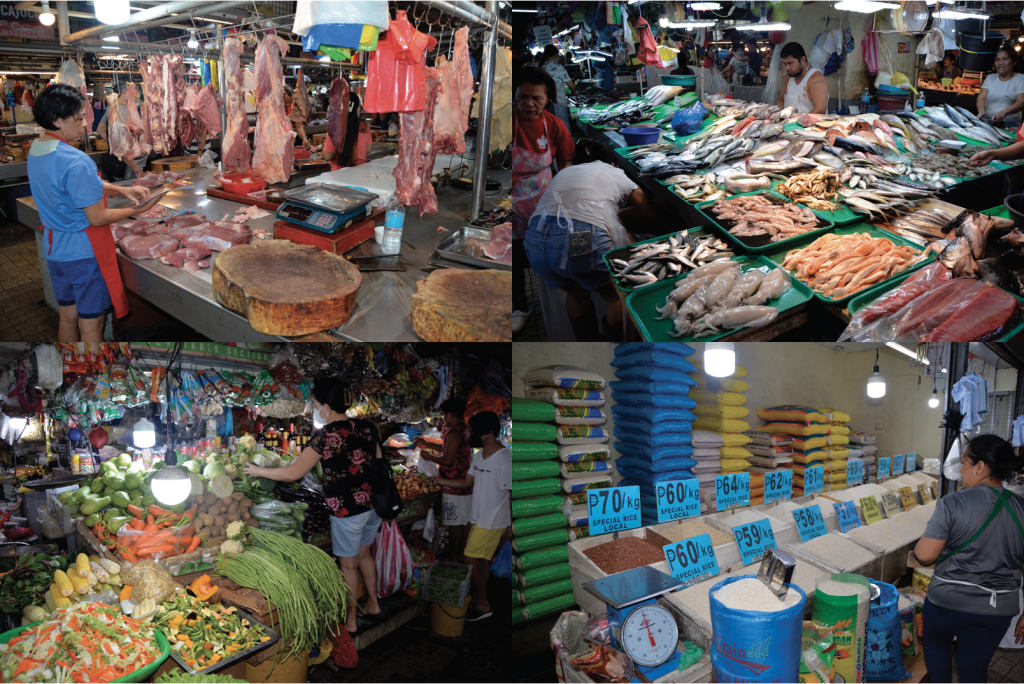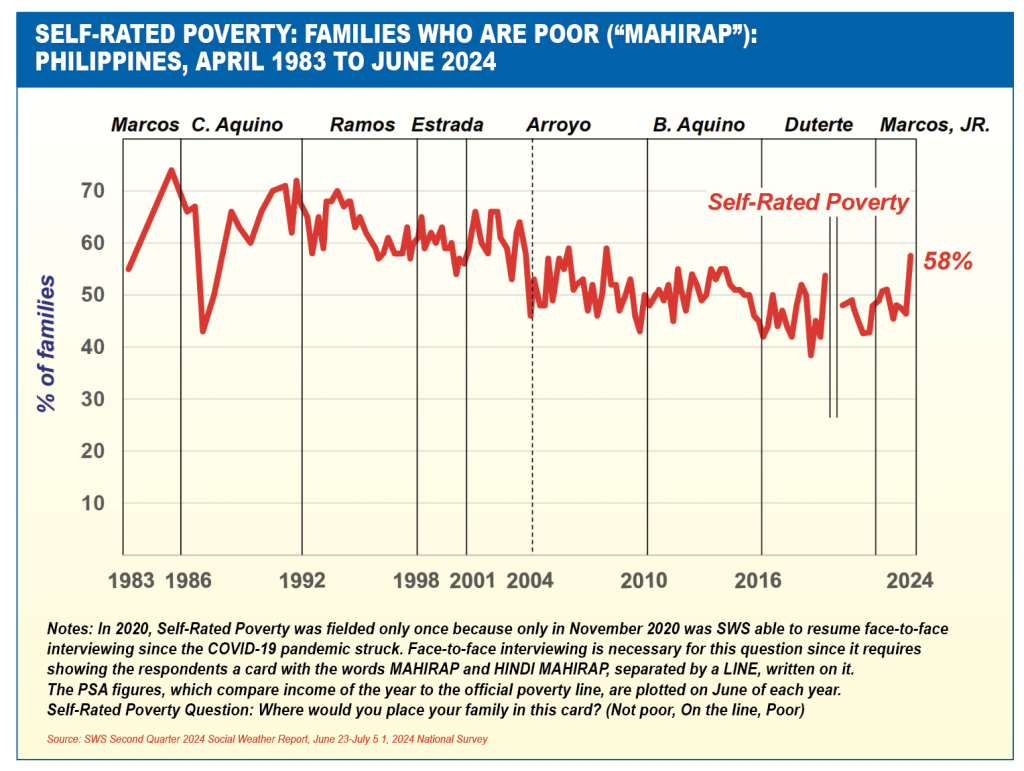Philippine food prices are the highest in 100 years. In first quarter 2024, if you bought rice at the farm, you paid the farmer P24.82 per kilo, the highest in recent recorded history, and a 37% increase from P18.17 in March 2023. Between March 2023 and March 2022, three months before Ferdinand Romualdez Marcos Jr. became president, the farm gate price of rice increased by just 4%, and between March 2022 and March 2021, the increase was also 4%.
By Tony Lopez

The country today has four major problems, all of them imponderable and herculean in immensity—inflation, poverty, poor quality basic education, and red tape.
“Inflation measures how much more expensive a set of goods and services has become over a certain period, usually a year,” says the International Monetary Fund. Half of our inflation is mostly about high food prices, particularly rice.
Philippine food prices are the highest in 100 years. In first quarter 2024, if you bought rice at the farm, you paid the farmer P24.82 per kilo, the highest in recent recorded history, and a 37% increase from P18.17 in March 2023. Between March 2023 and March 2022, three months before Ferdinand Romualdez Marcos Jr. became president, the farm gate price of rice increased by just 4%, and between March 2022 and March 2021, the increase was also 4%.
Stagnant palay production
One problem is the nearly stagnant local palay production—20 million tons in 2020; and still 20 million tons in 2023, after four years, when there were eight million more mouths to eat.
Imports were of no help. World rice prices rose 20% between 2020 and June 2024. President Marcos has cut the tariff on imported rice from 35 to 15%. But that will be like bringing imported rice price to 2020 levels when two of the biggest rice exporters, Thailand raised rice prices by 35% and Vietnam by 20% in a single year.

Meanwhile, the number of Filipinos who said they are poor reached 58% in the June 23-July 1, 2024 survey of the Social Weather Stations, the highest in 16 years, and up 12 points from 46% in March 2024. The previous high, 59%, was in June 2008.
Today, 16 million families claim to be poor, up from 12.9 million families in March 2024. Food is as high as 55% of a poor family’s expenses. So when you cannot buy what you should you be eating because prices are high, you feel hungry, poor, and miserable.
You cannot reduce poverty unless you solve the food shortage problem which leads to high food prices. During his term, Marcos wants to rescue 14 million Filipinos from poverty.
75% failure rate
Of the 15-year-old Filipino students who took the 2022 exams of the Program for International Student Assessment (PISA), 75%, or three of every four examinees, failed the exams in reading, math and science. Not only did our 15-year-olds fail, they failed or scored badly—a score of only 347 in reading vs. the global average of 480, 355 in math vs. the global average of 485, and only 356 in science, vs. the global average of 490.
The low scores of Filipino students were a reflection of their poverty; 36% of the Filipino examinees came from the bottom of the income class. The economically advantaged Filipino students scored higher in math, by 36 score points than the average of their poor colleagues.
In PISA, only 16% the Filipinos attained Level 2 proficiency in math; the OECD average 69%. In math, reading and science competence, our students are five years behind their peers in education.
At Level 2, explains PISA, “at a minimum, these students can interpret and recognize, without direct instructions, how a simple situation can be represented mathematically (e.g. comparing the total distance across two alternative routes, or converting prices into a different currency).” Over 85% of students in Singapore, Macao (China), Japan, Hong Kong, and Taiwan performed at Level 2 or above.
Some 24% of students in the Philippines attained Level 2 or higher in reading (OECD average: 74%, Singapore 89%).
At a minimum, says PISA, these students can identify the main idea in a text of moderate length, find information based on explicit, though sometimes complex criteria, and can reflect on the purpose and form of texts when explicitly directed to do so.
No Filipino students scored a Level 5 or higher in reading (OECD average: 7%). These students can comprehend lengthy texts, deal with concepts that are abstract or counterintuitive, and establish distinctions between fact and opinion, based on implicit cues pertaining to the content or source of the information.
Filipino kids failed science tests
Only 23% of the Filipinos attained Level 2 or higher in science (OECD average: 76%). At a minimum, these students can recognize the correct explanation for familiar scientific phenomena and can use such knowledge to identify, in simple cases, whether a conclusion is valid based on the data provided.
No Filipino students were top performers in science, meaning that they were proficient at Level 5 or 6 (OECD average: 7%). These students can creatively and autonomously apply their knowledge of and about science to a wide variety of situations, including unfamiliar ones.
Finally, red tape. It is the bane of every Filipino who needs a document or wants to deal with any government agency. It is the No. 1 problem of every tycoon and taipan worth his salt.
I applied for a Meralco meter connection for a small farm house in Cavite. Meralco could not immediately give me the meter.
Reason: The barangay told me to comply with a list of requirements—17 permits or plans (land title, building permit, electrical permit, fire permit, sanitation permit, engineering permit, electronics permit, mechanical permit, location plan, garbage plan, environmental clearance, sewage permit, etc).
Why must a barangay intervene in a purely private business like getting a Meralco meter? It takes 47 signatures to install a telco tower; 20 to get a business permit.
Chamber of Mines Chair Atty. Mike Toledo says it takes 1,000 signatures to get a mining project off the ground.
The problem with red tape?
Our local government units (LGUs).
